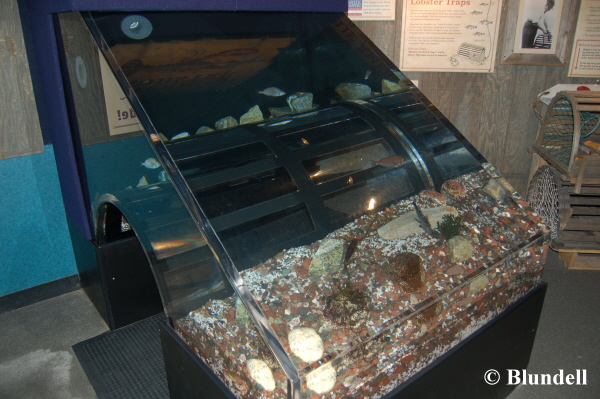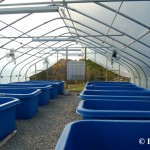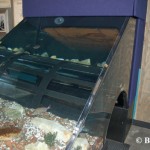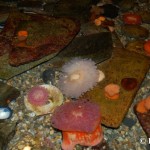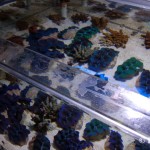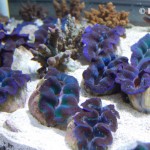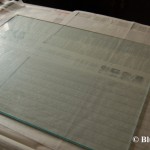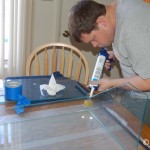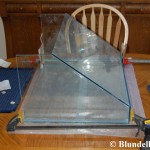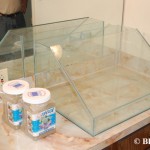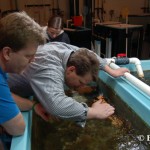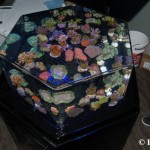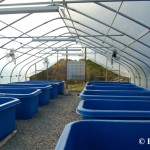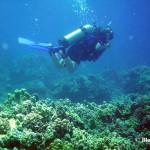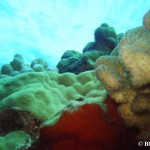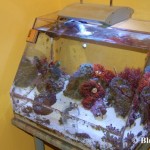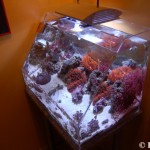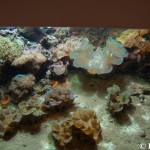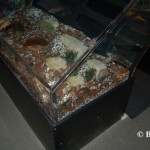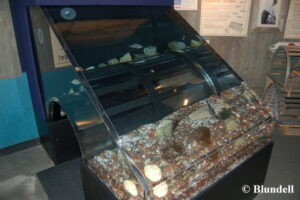
Background
Have you ever wondered why so many fish are horizontally compressed? Do you see beautiful clams for sale on-line but when you get them they are bland? Why do so many wrasse have horizontal stripes? Why do seahorses swim with their heads down?
In interesting answer to these questions (and many more) is perspective.
Perspective is more than essential to reef keeping, it is the core backbone of the hobby. For most humans the reef is perceived looking straight ahead… much like the way you see your aquarium. But why do we have that “straight ahead†viewpoint? Because we stand upright and look forward; but not everything does.
From a very early age I was intrigued by Rainbow Trout. The white belly, the dark dorsal area, and of course iridescent colors to stretching down the sides of the body. There are very good explanations to explain how these characteristics evolved, and those explanations all deal with perspective.
Top Down
Viewing a reef from a top down perspective is challenging. Trying to overcome a lifetime of seeing things in front of you and not below you takes constant effort. Many hobbyists can experience this while snorkeling on the reefs, but once returned to their aquariums they are back to looking ahead. For many animals on the reef (or for research scientists like myself) looking down on the reef is ever so important.
With all the advancements in lighting, filtration, foods, and even ecosystem development; I would have expected a bigger development in tank shape and design. However, the rectangle box still rules the hobby.
Some recent developments have been encouraging. Biotopes are now making their way into the hobby, reef zone design is being tested, and lighting is ever approaching a natural method. And now, finally, top down viewing is becoming a reality. I’ll admit much of this shift is due to coral frag selling and trading; which seems like a poor reason to develop this method, but nonetheless it is nice to see the trend.
IMAGES- Looking Down, Looking UP
Think looking down on a reef provides different view points? Imagine looking up from the reef…
Examples
Top down tanks are starting their trend in a few areas. First of all as was mentioned coral farming. Let’s just say it works great for growing corals and move on.
Seagrass Biotopes. Ah yes, those wonderful seagrass tanks. A great advancement in the hobby with real character and development.
Mangrove aquaria. Starting to come into play as more hobbyists are growing mangroves for more than just refugium nutrient removers.
Jellyfish. Those cute little pulsating bags of jell-o. Their top down view allows the hobbyist to see the full jellyfish and to watch the rhythmic pulses.
Clams. Not to harp on this topic since it has been said elsewhere many times but… you haven’t really seen a clam until you’ve seen it from above. If you are unfamiliar with iridophores please read James Fatherree’s book “Giant Clams in the Sea and the Aquarium†which helps shed light on this subject (get it? Shed light, dang that’s funny). Basically iridophores are cells that can produce light, or reflect light. They produce colors of great intensities and dramatic contrast. For example, a clam seen horizontally as blue may be viewed as emerald green with purple stripes from above.
A few tanks have been made to showcase top-down viewing. Here are some of my favorite examples.
Steven Pro’s Coral Growing Greenhouse.
Shane Silcox’s clam beds (he must really love clams, and seeing them from all sides)
Public aquaria use top down tanks to hold corals, many of which are rescue corals that are illegally imported (shown here expert Adam Cesnales inspects the corals)
When selling corals, it is all about the show… and this tank not only shows it glows!
Some public aquariums will use top view tanks to show off their reefs, especially with clams. These tanks allow the viewer to see the colors often lost when seen from the side.
This seagrass bubble tank is one of my favorites. I love unique design and sense of “snow globe” when looking at this tank.
In addition to looking down on this tank, one can crawl inside the tunnel to see it from all around.
Cold water tanks are growing in the hobby. Often times tidepool tanks are made top view to replicate how many people see them when walking along the coast lines.
One of the most famous hobbyists in the world builds his own top view tanks. Marc Levenson is a master with acrylic, and has a keen sense for unique reef keeping.
Making Your Own!
It really isn’t that tought at all. Be it glass or acrylic many hobbyists have the ability to create their own top viewing tanks. Here is one example of an angle view tank that I made. Simply cut the glass (or buy the glass pre-cut if you’d like), apply silicone, clamp it together, and BOOM you have a very interesting display.
Author Information
Adam Blundell M.S. is a hobbyist, lecturer, author, teacher, and research biologist. Adam is the director of the Aquatic & Terrestrial Research Team, a group which bridges the gap between hobbyists and scientists. Adam can be reached by email at [email protected].


